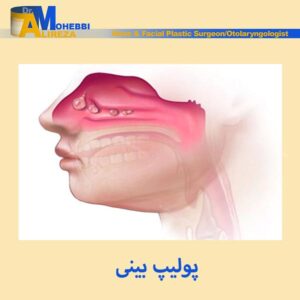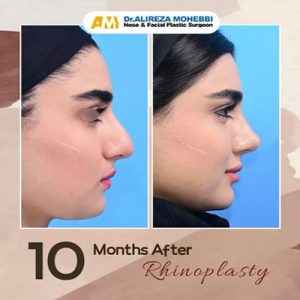Background
Sinusitis usually caused by any disorders contributed to the blockage of the osteomeatal unit (OMU) such as infections, allergies and disorders of mucociliary trans-port. Also, anatomic variations of the nasal cavities and paranasal sinuses are other factors that may cause block-age [1]. Anatomical variants of the sinonasal cavities are very common and about 15 major variants have been described [2]. Variations causes narrowing or obstruction of the osteomeatal channels, thereby hamper the normal airflow and mucociliary clearance of the sinuses. Some studies contend that an anatomic variation is a factor in development of chronic sinusitis ;depend on its size, location or the amount of mucosal contact caused by the variation[3].
Nasal septum deviation is a common disorder that presents in up to 62% of the population, and its role in the pathogenesis of chronic sinusitis remains uncer-tain [4].
A concha bullosa is a pneumatized cavity within a tur-binate in the nose [5]. The incidence rate of this disorder has varied from 14 to 53% in different studies. The rela-tionship between the presence of concha bullosa and sinusitis has not been clarified yet [6] . While some studies suggest that septal deviation(SeD) or the presence of concha bullosa may interfere with proper airflow, potentially predisposing to sinus diseases, other studies have produced contradictory findings [7,8].
Since the relationship between the site of chronic sinusitis and the degree of nasal septum deviation has not been established by previous studies, this study was designed with a large sample size to investigate any associations between the presence of septal deviation and its degree with the severity of sinusitis and also the relationship between the presence of concha bullosa and the severity of sinusitis.
The result can help therapeutic strategies. Surgeries (septoplasty) associated with SeD can decrease the rate of chronic sinusitis and so its complications if there is a correlation between these two diseases.
Methods
Ethical approval
This study was a cross sectional study that was approved by ear-nose-throat (ENT) and Head and Neck surgery research center of Rasoul-e-Akram hospital of Tehran university of medical sciences.
Written informed consent was obtained from the patient for publication of this research and any accom-panying images.
 .
.
Figure 1 The severity of maxillary sinus was considered as 1 if there was an incomplete involvement. If there was an S shape deviation in septum, the more deviated angle was considered for analysis.
In this picture, the septum is deviate first to left (green color) and then to right (red color), but because the deviation to right was much more than the other side, the first deviation to left was ignored.

Design
From April 2011 to December 2011, all patients pre-sented with nasal obstruction or chronic sinusitis symp-toms to ENT clinic were explained about the aim and design of the study. To confirm the diagnosis of chronic sinusitis, all patients should underwent sinus CT scan (PNC CT) as a gold standard. From those patients who agreed to be entered in the investigation, were selected to be evaluated for the severity of sinusitis according to the Lund Mackay staging system [9].
Also the CT scans were checked for the presence of conchae bullosa and the degree of SeD. If the patient had a history of nasal trauma within the last year or had a major chronic disease, he/she was excluded from the study. Also heavy smokers (>10 pack/year) were not included the study.
To define the severity of sinusitis in different sinuses, we used Lund-Mackay scoring system. If the sinus was completely involved the score was considered 2, if there was not a complete involvement the score was consid-ered 1 (Figure 1), and if the sinus was completely intact the score was considered 0.
According to the degree of SeD, the patients were categorized to 4 groups; the first group (normal group): 0 < SeD ≤ 5 (degree of the center), the second group


(mild): 5 < SeD ≤ 10, the third group (moderate):10 < SeD ≤ 20 and the forth group (severe): SeD > 20. If there was an S shape deviation, the more deviated angle to right or left was considered as the SeD for analysis (Figure 1). The patients whose CT scans did not reveal any chronic inflammations of sinuses were excluded. At the end of the period of the study, 463 patients were entered for analyzing.
Statistical analysis
The data were entered to the SPSS software, version 18 (PASW). To describe the qualitative variables, the per-centage was used as the descriptive index and to de-scribe the quantitative variables, mean and standard deviation (SD) were used.
To find the difference between the degree of SeD in each group of patients with different severity of sinusitis, chi square test was used. Also to understand the rela-tionship between the severity of sinusitis and also the degree of SeD in patients with conchae bullosa with the group of patients without concha bullosa, chi square test was used. The P value less than 0.05 was considered as significant. To clarify the relationship be-tween SeD to right/ left and the site of involvement,the patients with the opposite site of deviation were omitted and the severity of the disease in normal popula-tion (without SeD) was compared with the severity of the disease in patients with right or left involvement.
Results
At the end of the study, 463 cases were analyzed. 47% of them had septal deviation. The frequency of different grades of chronic sinusitis and the involved site are shown in Table 1.
In our study, concha bullosa was seen in 16.8% of the patients in the left side and 27.6% of them in the right side.
In our study, 47% of patients had septal deviation. The frequency of patients with different degrees of SeD is shown in Table 2.
The patients were evaluated for the bilateral involve-ments (Table 3).
The results of chi square test between the presence of concha bullosa and the severity of sinusitis is shown in Table 4.
The results of chi square test between the severity of sinusitis and the degree of SeD is shown in Table 5.
The relationship between the presence of SeD (either to right or left) and the severity of sinusitis was calcu- lated (Table 6).
Discussion
In lots of previous studies, the increased degree of SeD was in association with the increased prevalence of rhinosinusitis. A review article of five articles in 2010 revealed a significant relationship between the presence of SeD and rhinosinusitis (P value of chi square analysis = 0.0004, odds ratio = 1.47). By reviewing the literatures, in lots of studies that examined the laterality of rhinosinusitis and septal deviation, inflammation was found bilaterally. Also, it seems that previous studies were insufficiently powered to detect an association be-tween rhinosinusitis and the degree of septal deviation.
In the other hand, the severity of sinusitis has not been sufficiently investigated [10].
In a study conducted between 2003 and 2005 to evalu-ate the recurrence of the symptoms of rhinosinusitis in 130 patients, 58 patients were involved by both nasal septal deviation and concha bullosa. In that study, no statistical differences were found between the presence of sinusitis and SeD. Also they did not find any relation- ship between the SeD and frontal recess or osteomeatal involvement. Of 130 patients, 44.6% were involved by both nasal septal deviation and concha bullosa. In that study, the prevalence of sinusitis in patients with severe SeD was significantly more than the patients with mild to moderate deviation [11].


In another study, PNC CT scan of 44 patients with rhinosinusitis were evaluated to understand the relation-ship between the presence of concha bullosa, SeD and sinusitis.
They found a significant relationship between unilateral concha bullosa and SeD. In the other hand, they did not find any significant relationships between the presence of unilateral and bilateral concha bullosa and sinusitis. Also the presence of bilateral concha bullosa was not significantly associated with SeD (p > 0.05) [12].
In another study, CT scans of orbit in 89 cases with no history of sinusitis were studied to investigate the incidence of the presence of septal deviation, concha bullosa, paradoxical middle turbinates and the correla-tions. The results showed that despite radiological findings, there were no significant relationships be-tween these abnormalities and an increased incidence of sinusitis [13]. In another similar study, no statistical relationship was found between SeD and sinusitis. They revealed that middle turbinate changes and SeD are not associated with chronic sinusitis [14].
A study in the last decade showed no significant differ-ence between the presence of SeD in patients with chronic rhinosinusitis and the control group. Also they did not find any significant relationship between the severity of SeD and OMC involvement with the severity of sinusitis [15].
In a study in 2008, 883 CT scans taken at Creighton University School of Dentistry reviewed for the presence of concha bullosa, nasal SeD, and maxillary sinusitis. Concha bullosa was seen in 67.5% that 49.3% of them had maxillary sinusitis. Also19.4% of patients had a deviated septum, and 50.0% of them had mucosal thick- ening consistent with maxillary sinusitis. There was no significant relationship between the presence of con- cha bullosa or nasal septal deviation and maxillary sinus-itis [16].
In another study, 100 PNC CT scans were com-pared with 82 orbital CT scans. Concha bullosa was associated with anterior ethmoid disease (p less than 0.04). Septal deviation was associated with osteomeatal complex disease (p less than 0.01) and with anterior (pless than 0.04) and posterior (p less than 0.04) eth-moid disease [17].
Lots of previous studies investigated the association between septal deviation and sinusitis that revealed some significant results. Comparing our findings with the pre-vious studies which assessed the relationship between septal deviation / its degree and the severity of sinusitis and also the relationship between concha bullosa and the severity of sinusitis, the results were the same.
Conclusion
Since there was no coordination between our findings,the exact conclusion of association between the presence of concha bullosa and the severity of sinusitis or osteo-meatal involvement has not been raised. To define the relationships between the presence of concha bullosa and the severity of sinusitis meta-analysis based on other previous findings seems to be needed.
By our study, it is concluded that there is no associ-ation between the severity of sinusitis, osteomeatal in-volvement and the degree of septal deviation which is in contrast with some previous studies but confirm the others (Table 5).
Moreover, we did not find any associations between the presence of SeD (either to right or left) and the severity of sinusitis in different sinuses (Table 6). The presence of septal deviation and its degree were not associated with the severity of sinusitis in our study. Also the presence of concha bullosa was not seemed to have a clear relationship with the severity of sinusitis.
Abbreviations
SSRC: Scientific Students’ Research Center of Tehran University of Medical Sciences;
SeD: Septal deviation; OMU: Osteomeatal unit; ENT: Ear-nose-throat;
PNC CT: Sinus CT scan.
Competing interests
The authors declare that they have no competing interests.
Financial competing interests
In the past five years we have not received reimbursements, fees, funding, or salary from an organization that may have any financial gains from the publication of this manuscript, either in now or in future.
We do not hold any stocks or shares in an organization that may in any way gain or lose financially from the publication of this manuscript, either now or in the future.
![]()
We do neither hold nor currently applying for any patents relating to the content of the manuscript. We have not received reimbursements, fees, funding, or salary from an organization that holds or has applied for patents relating to the content of the manuscript. We have not any financial competing interests. Non-financial competing interests.
There are not any non-financial competing interests (political, personal, religious, academic, ideological, intellectual, commercial or any other).
Authors’ contributions
AM: study concept and design; acquisition, approved the final manuscript.
AA: study concept and design, coordination for the acquisition of data, read and approved the final manuscript. ME: study concept and design approved the final manuscript the final manuscript.
MS: Acquisition, interpretation of data, writing the manuscript. ShGh: Acquisition, Designing the study, analysis and interpretation of data, writing the manuscript, read and approved the final manuscript.
Acknowledgement
This study was done in ENT & Head & Neck Surgery research center of Rasoule Akram Hospital – Tehran University of Medical Science, Tehran.
Author details
1Ear-Nose-Throat [ENT] and Head and Neck Surgery Research Center of Rasul-e-Akram Hospital, Tehran University of Medical Sciences, Sattarkhan street, Tehran, Iran.
2Tehran University of Medical Sciences (TUMS), Students’ Scientific Research Center of TUMS, Tehran, Iran.
Received: 20 February 2012 Accepted: 7 November 2012
Published: 17 December 2012
References
- Kennedy DW, Zinreich SJ, Rosenbaum AE: Functional endoscopic surgery: theory and diagnostic evaluation. Arch Otolaryngol 198 111:576–582.
- Lehmann P, Bouaziz R, Page C, Warin M, Saliou G, Deschepper B, Deramond H: Sinonasal cavities: CT imaging features of anatom variants and surgical risk. J Radiol 2009, 90(1 Pt 1):21-–9.
- Kennedy DW, Bolger WE, Zinreich SJ: Disease of theSinuses, diagno management, B.C. London: Decker Inc Hamitton; 2001:19–24.
- Lloyd G: CT of the paranasal sinuses: study of a control series in to endoscopic sinus surgery. J LaryngolOtol 1990, 104:477–481.
- Bolger WE, Butzin CA, Parsons DS: Paranasal sinus bony anatomi variations and mucosal abnormalities: CT analysis for endoscop surgery. Laryngoscope 1991, 101(1):56–64.
- Lloyd G, Lund V, Scadding G: CT of the paranasal sinuses and fu endoscopic surgery: a critical analysis of 100 symptomatic pati J LaryngolOtol 1991, 105:181–185.
- Stallman JS, Lobo JN, Som PM: The incidence of concha bullosa relationship to nasal septal deviation and paranasal sinus disea Am J Neuroradiol 2004, 25(9):1613–1618.
- Subramanian S, Rampal GRL, Wong EFM, Mastura S, Razi A: Concha bullosa in chronic sinusitis. Med J Malaysia 2005, 60(5):535–539.
- Lund V, Kenndy DW: Staging for Rhinosinusitis. Otolaryngol Head Neck Surg 1997, 117(3pt 2):35–40.
- Orlandi RR: A systematic analysis of septal deviation associated with rhinosinusitis. Laryngoscope 2010, 120(8):1687–1695.
- Hatipoglu HG, Cetin MA, Yuksel E: Nasal septal deviation and concha bullosa coexistence: CT evaluation. B-ENT 2008, 4(4):227–232.
- Aktas D, Kalcioglu MT, Kutlu R, Ozturan O, Oncel S: The relationship between the concha bullosa, nasal septal deviation and sinusitis. Rhinology 2003, 41(2):103–106.
- Hamdan AL, Bizri AR, Jaber M, Hammoud D, Baino T, Fuleihan N:Nasoseptal variation in relation to sinusitis. A computerized tomographic evaluation. Med Liban 2001, 9(1):2–5.
- Cho JH, Park MS, Chung YS, Hong SC, Kwon KH, Kim JK: Do anatomic variations of the middle turbinate have an effect on nasal septal deviation or paranasalsinusitis Ann Otol Rhinol Laryngol 2011, 120(9):569-–74.Orlandi RR: A systematic analysis of septal deviation associated with rhinosinusitis. Laryngoscope 2010, 120(8):1687–1695.
- Harar RP, Chadha NK, Rogers G: The role of septal deviation in adult chronic rhinosinusitis: a study of 500 patients. Rhinology 2004,42:126–130.
- Smith KD, Edwards PC, Saini TS: The prevalence of concha bullosa and nasal septal deviation and their relationship to maxillary sinusitis by volumetric tomography. Int J Dent 2010, pii: 404982. Epub 2010 Aug 24.
- Calhoun KH, Waggenspack GA, Simpson CB, Hokanson JA, Bailey BJ: CT evaluation of the paranasal sinuses in symptomatic and asymptomatic populations. Otolaryngol Head Neck Surg 1991, 104(4):480–483.





